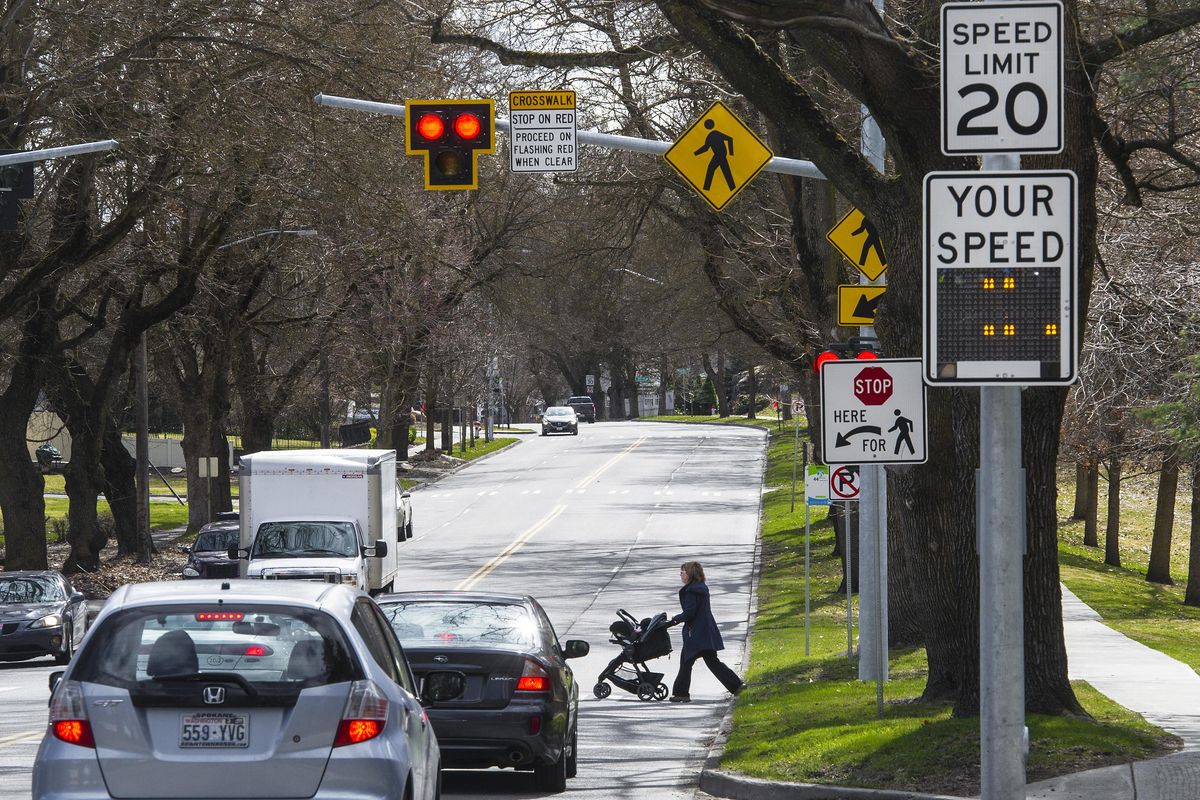Slower speed limits suggested near Spokane city parks

Spokane motorists passing near city parks may be required to slow down following a several-year push by neighborhood residents to stymie speeders.
At a meeting earlier this week, city lawmakers, traffic engineers and police heard from neighborhood representatives pushing for lower speed limits around town. Among the proposals was a request to set speed maximums at 20 miles per hour near each of Spokane’s 87 neighborhood parks.
The plan could also bleed into other residential parts of town.
“Speed limits has been one of our focus areas for two years,” said Paul Kropp, chairman of a committee of neighborhood representatives overseeing traffic and pedestrian projects that organized the meeting.
Under a state law passed five years ago that gives cities and counties more authority to set their own speed limits, Spokane could reduce speeds to 20 miles per hour in certain areas of town without conducting an engineering or traffic study. By city law, speed limits are set at 25 miles per hour on residential streets and 30 miles per hour on arterial roads, unless otherwise posted.
Spokane police Sgt. John Griffin, supervisor of the department’s traffic unit, said he appreciated the desire of residents to slow speeding cars, especially in areas where children play and walk to school, but the unit likely doesn’t have enough officers to constantly enforce tougher speed restrictions.
“I don’t want to give the unrealistic expectation that just because we put up the sign, with our current staffing level we’ll be able to be at all of them, all the time,” Griffin said.
The city’s traffic unit is made up of six officers. One of those officers is assigned to patrolling the 10 parks that have seasonal speed limits reduced to 20 mph, Griffin said. A stretch of Grand Boulevard, near Manito Park on the South Hill, is the only road near a park that currently has a permanent 20-mph speed zone. It was established by city ordinance in 1977.
Adding another 77 parks to the workload of the traffic officer, without new hires to enforce the law, might not allow the department to give residents what they want – a real deterrent against speeding, Griffin said.
City lawmakers, who approved hiring four additional traffic officers with money collected from automated speeding tickets generated in school zones, said they understood the police department’s concerns about enforcement.
“We’ve been concentrating on property crime and hiring additional police officers for that,” said City Councilwoman Lori Kinnear. “There was some confusion – can’t they do both? But when you have a list in front of you of crimes, traffic enforcement’s going to be the bottom.”
City Councilman Breean Beggs, who’s led the discussion on the use of traffic camera citation money, said speed-limit reduction is just one idea on the table to address the speeding problem, and that other options might make more sense to pursue first.
“There’s no unanimity, except for the fact that everybody seems to agree that we need to find a solution, mostly for kids walking to and from school,” Beggs said.
The city has already been using money from the red-light cameras around town to fund what are called “traffic calming” projects, Beggs said. Those include more visible crosswalks, sidewalk “bumpouts” that stretch into traffic lanes and speed indication signs in certain spots around town. This week’s meeting was an attempt to get people representing interests in the neighborhoods and at City Hall under one roof to discuss further measures, which may include speed reductions, Beggs said.
“If there is a change on speed limits, it would probably be around parks,” he said.
But such a move is still likely months away. Kinnear asked neighborhood representatives to come back to council members later this year with their ideas on where speed reduction makes the most sense.
“This is not something you take lightly, it would be something that would have to have data behind it,” Kinnear said. “You can’t just go out and decide, this road is going to be 20 miles per hour and this one isn’t.”